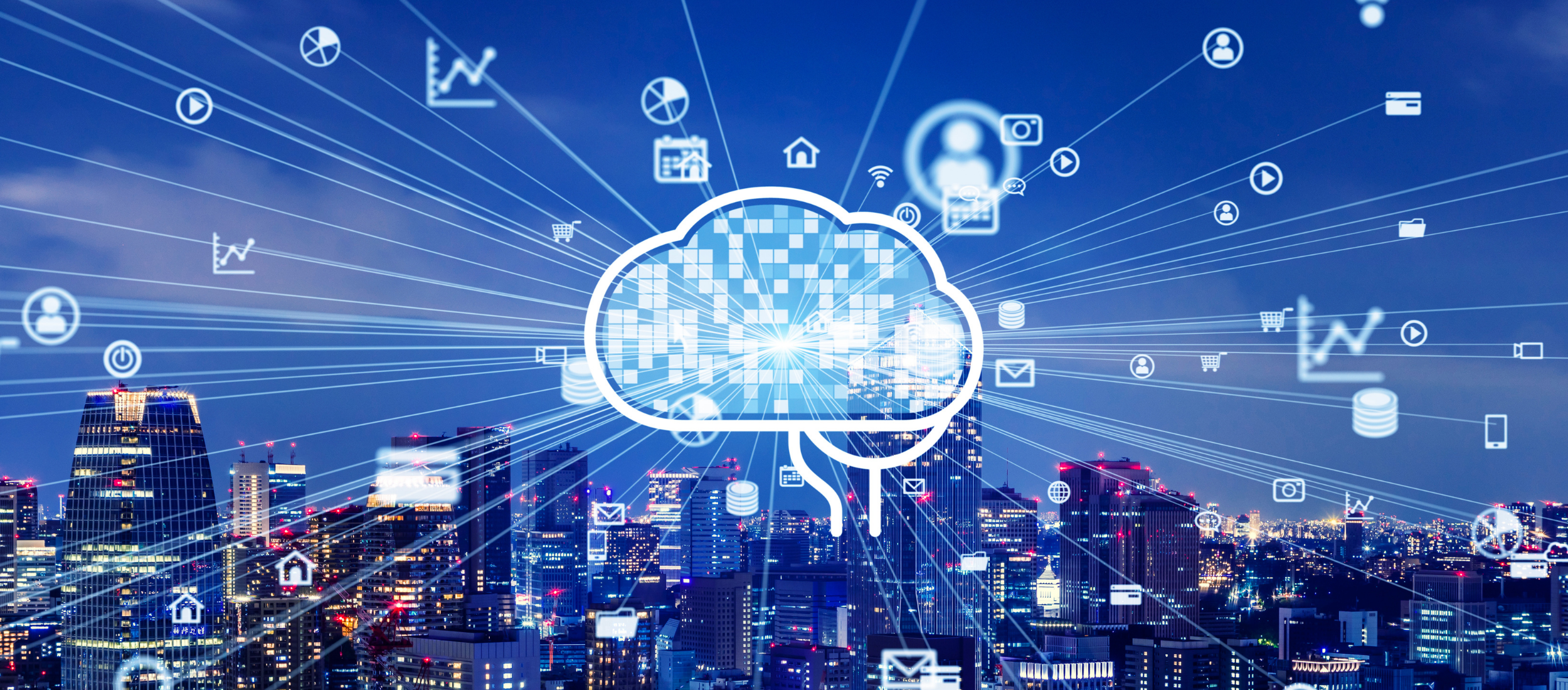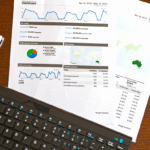In the last five years, Artificial Intelligence has gone from a futuristic concept to a marketer’s daily tool kit. What was once “nice-to-have” is now a competitive necessity. From generating copy to predicting customer behavior, AI can handle up to 80% of your marketing activities – freeing you up to focus on strategy, creativity, and building relationships.
The goal isn’t to replace humans, it’s how best you can use AI to scale what works, eliminate repetitive work, and make data-driven decisions faster than ever before.
In this blog we help you understand how AI can help you to automate 80% of your marketing, without losing human touch.
1. Content Creation at Scale
AI can help you plan, draft, and optimize marketing content in minutes, without sacrificing quality. You can use it for:
- Blog Writing: Jasper and Copy.ai can draft long-form articles with SEO keywords based on a single prompt.
- Social Media Captions: ChatGPT can generate multiple tone variations, making A/B testing easier.
- Product Descriptions: Shopify merchants use AI to instantly create compelling, keyword-rich listings.
According to HubSpot’s 2024 AI in Marketing Report,
58% of marketers already use AI for content creation, and
those who do report saving an average of 5+ hours per week.
2. Email Marketing Personalization
Personalized emails drive 6x higher transaction rates (Experian) and with AI you can now personalize emails at scale without manually segmenting every list. You can use it for:
- Dynamic Subject Lines: AI predicts which phrases will improve open rates based on past campaign performance.
- Behavior-Based Triggers: If a customer browses a product but doesn’t purchase, AI automatically sends a personalized discount code.
- Send Time Optimization: Tools like Klaviyo and Mailchimp use machine learning to send emails at the exact time each subscriber is most likely to engage.
Automated email campaigns deliver 320% more revenue per email compared to non-automated campaigns (DMA). This can help brands toengage with every customer like they’re your only customer.
3. Social Media Scheduling & Engagement
Posting consistently is essential on social media, but it is also exhausting and resource intensive. With AI you can automate content scheduling, engagement tracking, and even community responses. You can use it for:
- Content Calendar Automation: Buffer and Later suggest posting times and even repurpose old high-performing content.
- AI Engagement Bots: Tools like Heyday.ai can respond to basic DMs or comments instantly, keeping customers warm until you can reply personally.
- Trend Analysis: AI scrapes trending topics to suggest timely, relevant post ideas.
According to Sprout Social, businesses that post consistently on social media see 2x audience growth rate compared to irregular posting. With effective use of AI, your brand stays active 24/7 giving you the opportunity to always connect with your customers.
4. Ad Campaign Optimization
Running paid ads is a science and AI is your lab assistant that never sleeps. Here are some of the ways you can effectively run campaigns using AI:
- AI Bidding Strategies: Google Ads’ Smart Bidding uses real-time data to adjust bids for conversions.
- Creative Testing: Facebook’s Advantage+ automatically rotates ad variations to find the best-performing combination.
- Audience Expansion: LinkedIn Ads uses AI to find “lookalike” audiences based on your existing best customers.
Studies by WordStrem show marketers who use AI for ad optimization see up to 30% lower cost per acquisition.
5. Customer Service & Lead Qualification
Chatbots have evolved from clunky scripts to intelligent brand assistants that you can’t resist. AI chatbots can resolve up to 80% of routine customer inquiries, reducing support costs by up to 30%. This empowers brands to deliver instant responses without needing a huge support team. You can use it for:
- AI Chatbots: Drift or Intercom can answer FAQs, qualify leads, and book sales calls automatically.
- Lead Scoring: AI assigns a score to leads based on behavior, allowing sales teams to focus on high-potential prospects first.
6. Predictive Analytics & Campaign Forecasting
McKinsey reports predictive analytics can improve marketing ROI by up to 20% and AI doesn’t just look at what’s happening now, it predicts what will happen next. You can use it for:
- Churn Prediction: AI analyzes behavior patterns to identify which customers are likely to leave — so you can re-engage them early.
- Sales Forecasting: Tools like Pecan.ai project next quarter’s sales based on real-time campaign performance.
- Content Demand Forecasting: Netflix uses AI to predict which content will be popular, a tactic brands can apply to blog topics, products, or offers.
7. SEO & Website Optimization
SEO is no longer just about keywords. It’s about understanding search intent and user behavior. Businesses using AI-powered SEO tools see an average 45% increase in organic traffic within 6 months according to BrightEdge. SEO experts can spend more time strategizing that constantly tweaking manually. They can use AI for:
- Content Gap Analysis: SurferSEO uses AI to analyze top-ranking content and suggest exactly what your article needs.
- AI Chat Search Assistants: E-commerce sites are adding AI search bars that suggest products based on vague queries.
- A/B Testing Automation: AI tools like Optimizely run hundreds of small experiments to improve conversion rates.
8. Creative Asset Generation
AI is now advanced to create high-quality visuals, videos, and even voiceovers, cutting production time in half. It reduces content production costs by up to 70% while maintaining or improving quality. Graphic design teams are using it for:
- AI Design: Canva’s Magic Design creates ready-to-use social posts from a few keywords.
- AI Video Editing: Descript automatically edits video based on transcript changes.
- Voiceovers: Murf.ai generates natural-sounding voiceovers for ads and tutorials.
The Big Picture: Where AI Fits In
Here’s what a fully AI-optimized marketing workflow could look like:
- Analyze audience data to identify trending topics.
- Generate blog drafts, social posts, and email campaigns from that research.
- Schedule and post across multiple channels at the best times.
- Runs A/B tests and optimizes ad campaigns for maximum ROI.
- Use chatbots to handle inquiries and qualify leads while you focus on high-value calls.
- Use reports performance and predicts next steps.
This doesn’t mean humans are out of the picture, quite the opposite. The marketer’s role shifts from doing all the manual work to guiding strategy, applying brand personality, and making creative decisions.
(If you’re enjoying this article, you might like to subscribe to our bi-weekly email newsletter AMPlify. We share new blog articles, videos, and valuable ideas on AI, Marketing and Performance insights to grow your business. We assure you that we will never spam you, sell annoying courses or packages, or bug you with anything non-useful.
Still Wondering, Why Automate 80% of Your Marketing with AI
- Time Savings: Free up 20+ hours per week for strategy and relationship building.
- Higher ROI: Optimize campaigns faster and reduce wasted ad spend.
- Scalability: Handle 10x more campaigns without increasing team size.
- Consistency: Keep messaging and posting regular across all platforms.
- Data-Driven Decisions: Base actions on predictive analytics, not gut feelings.
The 20% You Shouldn’t Automate
AI is powerful, but your human touch is your differentiator. Keep these in your hands:
- Brand voice and tone refinement
- Creative storytelling and emotional hooks
- Relationship-building with partners and clients
- Ethical judgment and final approvals
AI can’t replace your creativity, intuition, or empathy — but it can give you the time and headspace to do those things better. The businesses that win in the next five years will be those that blend AI efficiency with human authenticity.




